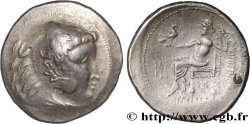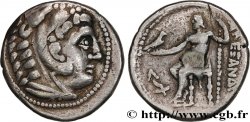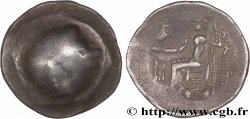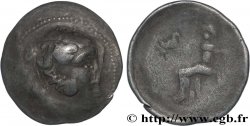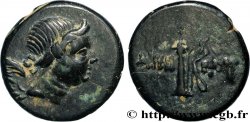bgr_840001 - DANUBIAN CELTS - IMITATIONS OF THE TETRADRACHMS OF ALEXANDER III AND HIS SUCCESSORS Tétradrachme
165.00 €(Approx. 188.10$ | 141.90£)
Quantity
Add to your cart

Type : Tétradrachme
Date: c. IIe siècle AC.
Mint name / Town : Atelier incertain
Metal : silver
Diameter : 28 mm
Orientation dies : 6 h.
Weight : 15,27 g.
Rarity : R1
Coments on the condition:
Exemplaire sur un flan large bien centré à l’usure plus marquée au revers qu’au droit. Belle patine de collection ancienne
Catalogue references :
Obverse
Obverse legend : ANÉPIGRAPHE.
Obverse description : Tête d’Héraklès à droite avec une belle léonté.
Reverse
Reverse legend : LÉGENDE ILLISIBLE.
Reverse description : Zeus assis à gauche, tenant un aigle de la main droite et un sceptre long de la main gauche ; monogramme dans le champ à gauche et sous le trône.
Commentary
Imitation du type de Philippe III. Ce tétradrachme est parmi les premières imitations des Celtes de l’Est ; le droit sera rapidement stylisé et dégénéré jusqu’à présenter une masse informe. Sur cet exemplaire le droit est encore bien visible.








 Report a mistake
Report a mistake Print the page
Print the page Share my selection
Share my selection Ask a question
Ask a question Consign / sell
Consign / sell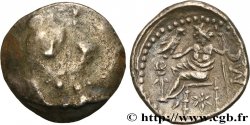
 Full data
Full data

